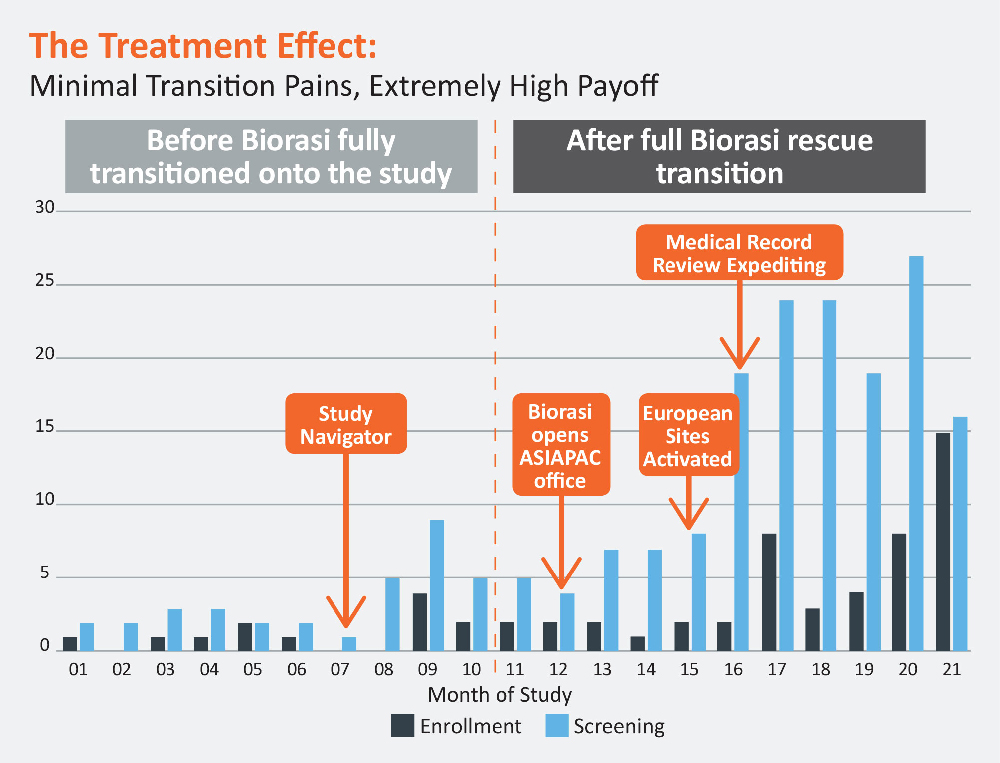Improving Communication to Boost Patient Retention
The Challenge:
Site selection is one of the most crucial parts of planning a study. Ensuring that sites are performing up to par while a trial is underway is equally important but often neglected. Biorasi was asked to assist in a phase II trial of stem cell therapy for traumatic brain injury (TBI).
Challenges included a complex surgical procedure, variability introduced by subjective rating scales, and a convoluted patient journey from enrollment to completion. That convoluted pathway was posing severe problems especially for enrollment: patients were calling sites that had not yet been activated, sites were not properly following up with patients to make sure they were screened, and candidates were being lost between screening and assessment sites. Even though the sponsor knew a rescue was in order, they were hesitant to rely on a new CRO for help.
The Solution:
Biorasi recognized the sponsor’s hesitance to engage with a new CRO and offered a limited engagement option to test the waters. In this “study navigator role,” Biorasi coordinated with the incumbent CRO and was able to thoroughly train while gradually assuming responsibility of the study. As study navigator, Biorasi facilitated communication between participants and sites and personally took measures to follow up with participants who would have been otherwise lost between screening visits. Initial results were so positive that Biorasi was asked to entirely replace the incumbent CRO in managing the trial. The takeover included the following:
- Replacing multiple project managers with one single contact to improve communication
- Adding new sites and tossing under-performing ones
- Increasing site booster visits
- Creating a new vendor manager position to adapt to the study’s needs
- Incentivizing investigators for database review to identify more potential participants
The Result:

Biorasi’s prior experience with trial rescues allowed for a quick and organized transition. The trial saw an immediate increase in the number of screenings and was even able to over-recruit by about 10%.
Patients no longer complained of the “poor customer service” that they experienced before the rescue. Efficient data collection and management strategies ensured that the later phases of the trial would be streamlined, setting the trial back on track to meet the original deadlines even though it had fallen so far behind.





